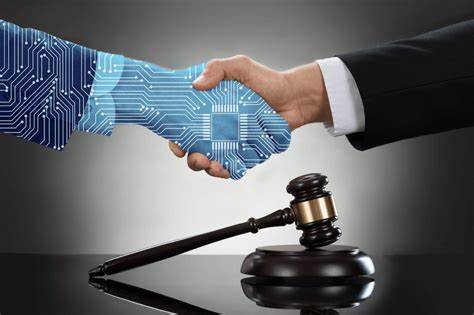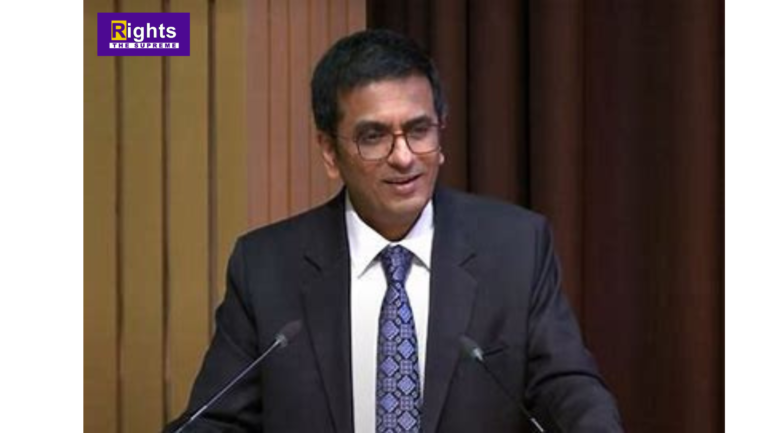As Chief Justice of India DY Chandrachud completes one year as the head of the Indian judiciary, it is worthwhile to have a look at some of the notableadministrative and infrastructural reforms ushered in by him during this term. The period since he took the office as the 50th Chief Justice of India on November 9, 2022 has witnessed several path breaking initiatives

Technology
Technology is a very powerful thing that is used in all filed and also made a turning point in the history of human civilization. It has brought about in all fields of human activity. The electronic communication devices such as electronic mail, video conferencing, and many more these are very useful to exchange of useful information between different locations and support to the higher quality of decision making. And these are not contributed to only business organizations but also contributed to legal and other public systems. And nowadays our country is also moving towards the technological system and as we know that the present government is saying that the ‘digital India’ they support to the digitalization for the development in the country and also we see in India that the people have expatiated from the government to higher quality of digital services from the government because most people are from the commercial organizations. And this suggests that identifying smarter ways of working across all sectors like public services including the judicial administration. And one of the recent developments is that the government makes digitalization of the legal system in the whole country. So, Center Government has asked all States to link prisons with courts through the video conferencing for the time-saving trail and also to save costs of escorting undertrials to courts.
Research Methodology
Since the nature of the research paper is theoretical; hence the data has been collected through secondary sources, for example, reference books, internet, journals, etc. have been widely consulted to develop the plan of the research paper
Present Working Method of Judiciary
If we talk about today's working system of judiciary then we see that there are lots of cases are pending in the courts. And if we talk about the data that how many cases are pending in the courts then we find that there are Out of 43 lakh cases are pending in High Courts, over 8 lakh a decade old, and this data is given by the Union law minister. Union Law Minister Ravi Shankar Prasad in a written reply said that “4.55 Mn cases are pending in the high court and out of these, 1.85 Mn relate to civil matters and 1.15 Mn are criminal cases.” and it is because of lack of manpower, transparency, and inadequate data on pending cases and that’s why these challenges are making it difficult to make streamline India’s justice system.
How Technology Can Change Our Judiciary System
Now we see in today’s life the filling a complaint is just one click. Many people are filing a complaint online just like you book your online air ticket; train ticket, online book your hotels, etc. this is called a digitalized manner of registering complaints. Filing an FIR, a civil case, RTI application, consumer grievance, application for document verification, driving license, etc. increased accountability of the authorities while saving a lot of hassle for a common man and also courts are providing regular case status updates through their web portals. And one of the recent developments by Prime Minister Narendra Modi has launched a new website of the Supreme Court of India in which we see that the all-new integrated case management information system (ICMIS). This feature also filing of cases of online digital cases under (ICMIS). Now we see that modern India while has framed the information and communication or electronic technology has just about to prove a new line of thinking or we say that new thinking’s in the modern Indian judicial system. it is all about the review of development in the administration of judiciary to do such things to be achieved are going to be considered in the light of artificial intelligence and it is used in the sentencing process. Like video conferences from jail to court, court to witness are some innovative things that are going to be discussed or things. If these have come, then we see how the computerization in the judiciary has become an effective tool for bringing down the pending cases and to reduce the delay. Speed up to deliver justice- In India we see that there is much more time is wasted because time is spent on traveling to from the court and it can be reduced or save the time in travel to the courtroom more cases can be handled and at a faster pace this increases to deliver a justice experience for citizens as they spend less time waiting for the legal process to unfold decision in which have the major impacts on their lives and businesses. To provide better witness protection for victims of crimesThose who have been abused or escaped from human trafficking or who may have to traumatize or face the accused in the court can use or only solutions are is used video conference to feel safe and secure. Judges can work from anywhere-Judges can remain connected from any locations from home offices while maintaining the lives of visual communication with officers and magistrates for hearing a sensitive case or such as for arrest warrants.
Digital Revolution
Digital Revolution offers few opportunities for those who provide legal aid and education to low-income people and their communities. New technologies enable us to create a higher work quality product to lead better research to learn faster and the most important thing is that advocates and clients can find relevant information on the internet and make new programs so that everyone can communicate more easily. In the last 10 years, we have experienced a digital revolution and these changes are happen when the time was changed and it begins with the creation of the internet and the web-browser this revolution has changed that how we work, play, and communicate and this obtains goods and the services. But the pace of change is not same in the all sectors of society. The advances in technology: The advocates and the clients both can share legal information through the internet and email. To provide brief advice and services to the client by posting information on the internet. For the better case management and the data collection along with automated templates for document creation. An improved communication system between lawyers and their clients through new telephone system technologies are cell phones and video conferencing. The recruitment of staff is through e-mail and the internet. Increased training opportunities for advocates. And also created a greater community through e-mail and the internet. Digital technology can be used in three functional categories To improve the program and office management. To increasing assistance and information for the advocates. Improve client education prevent legal problems and assisting prospective litigants.
Result
The results show that the evolution in the Indian Judiciary system. The evolution is not only at the level of operation but also at the level of execution. India is a world’s second largest democracy and the Judiciary is the important part of the Indian democracy. Importance of digital technology is not only limited to the business world but it also important for the governmental operation and judiciary is another area where digitalization is required in current era. The research focuses on showing the importance of digital technology in Indian Judiciary and how the operation and execution of judiciary can be improved with the help of technology. Very limited research available in this field and it is very important to talk about the importance of technology in Judiciary.

